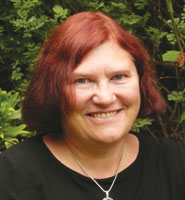In the mid-nineties, ‘social exclusion’ was beginning to have wider currency in the European Union, with implications for national governments. In 1996, Ruth Levitas published a seminal article on the concept and successfully applied for funding to look at the place of social exclusion in emergent New Labour thinking. Months later, in the summer of 1997, Peter Mandelson announced the setting up of a dedicated Social Exclusion Unit and the term began to figure more prominently, although usually in the undifferentiated phrase ‘poverty and social exclusion’. Levitas’s 1998 book, The Inclusive Society?: Social Exclusion and New Labour, showed that the focus of social exclusion had shifted away from the resources of the poor towards a preoccupation with integration through paid work and a focus on the behaviour of those experiencing hardship.
At the same time, colleagues in the School for Policy Studies, including Peter Townsend, David Gordon and Christina Pantazis,were, with colleagues at York and Loughborough, planning a new poverty survey. The funders, the Joseph Rowntree Foundation, specifically asked that the survey should incorporate measures of social exclusion. Levitas was thus co-opted onto the team and worked with Townsend to design this part of the questionnaire. The fieldwork for the Poverty and Social Exclusion Survey (PSE) was carried out in 1999, with an initial report in 2000. The results showed that the proportion of households living in poverty had increased under the Thatcher Government from 14% in 1983 to over 24% in 1999. Social deprivation was also reflected by the 10 million adults and one million children too poor to participate in common social activities such as visiting friends and family, having celebrations on special occasions, or attending weddings and funerals.
The proportion of households living in poverty increased under the Thatcher Government from 14 per cent in 1983 to over 24 per cent by 1999
There was considerable unease about the consequences of this increase in deprivation and the lack of social justice that it implied, and the report detailed the scale of the task facing New Labour in its desire to end poverty and social exclusion. A fuller analysis, edited by Pantazis, Gordon and Levitas, was published in 2006. The study was the most comprehensive and scientifically rigorous survey of its kind ever undertaken, providing unparalleled detail about deprivation and exclusion among the British population at the close of the 20th century. It was the first national study to measure social exclusion and to introduce an internationally comparable methodology for poverty and social exclusion. The PSE questionnaire was made freely available at an early stage and was widely used. The insistence on direct measurement of economic and social deprivation also influenced the Government’s mode of measuring child poverty.
In 2006, the Social Exclusion Unit commissioned the research team, this time led by Levitas, to review existing sources on severe forms of social exclusion, characterised as ‘deep exclusion’; to recommend possibilities of secondary analysis in order to explore the dynamics of deep exclusion; to identify any relevant gaps in the knowledge base; and to recommend research strategies for filling such gaps. This project reported in January 2007 as The Multidimensional Analysis of Social Exclusion. It showed the limitations of existing data sets, especially in the complex area of social exclusion, and the need for a new, dedicated national survey. It also provided a coherent framework for assessing different domains and dimensions of exclusion based on a comprehensive survey of theoretical and policy literature. The Bristol Social Exclusion Matrix, or B-SEM, now forms the basis of the approach taken by the (now) Social Exclusion Task Force. In adding questions of social participation and quality of life to the usual indicators of low income and employment status, the B-SEM, like the PSE, ‘puts the social back in social exclusion’. In response to the 2007 report, the Task Force commissioned four pieces of work on different stages of the life course, using the B-SEM as a common framework. The team, this time led by Eldin Fahmy, successfully tendered for one element of this, which has just reported as Understanding Social Exclusion Across the Life Course: Working age adults without dependent children.
Back in 2007, the team started work on a major bid to the Economic and Social Research Council to carry out a new national survey of poverty and social exclusion in 2010. This will be anchored at Bristol but incorporate researchers in Northern Ireland, Scotland, the Open University, York University and the National Centre for Research Methods. Negotiations with the ESRC are ongoing. Sadly, Peter Townsend, who would have been consultant to the project, died this summer, and his loss is felt acutely by members of the team. But if this application for £4 million is successful, it will be the largest grant ever awarded for poverty research in the UK. It will also reflect the recognition that the team which Bristol researchers have collectively built over a period of two decades is the best that could be put together in the UK, and probably the best in the world. And it will, we hope, be one more step in the alleviation and eventual eradication of poverty and social exclusion – which is, of course, the point of it all.

